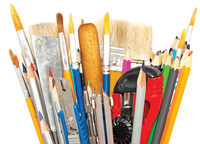Jack of All Trades
Like all work interfaces under Linux, the Gnome desktop offers a variety of smaller programs. One of these gems is the image viewer gThumb.

fotana, 123RF.com
Like all work interfaces under Linux, the Gnome desktop offers a variety of smaller programs. One of these gems is the image viewer gThumb.
Image viewers abound under Linux, and some have additional functions that permit universal application beyond the viewer capability. A particularly successful combination is gThumb, which consists of an image viewer together with software that allows the user to perform simple image editing tasks [1].
The gThumb software was developed for the Gnome desktop. For distributions that use Gnome as their interface, therefore, it is usually already installed. However, the software also runs with most other work environments, which at times leads to extensive dependencies.
You can install gThumb on Ubuntu with a simple:
[...]